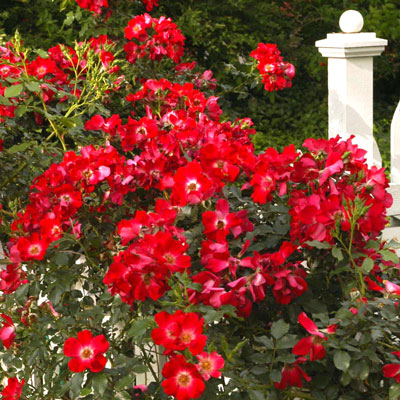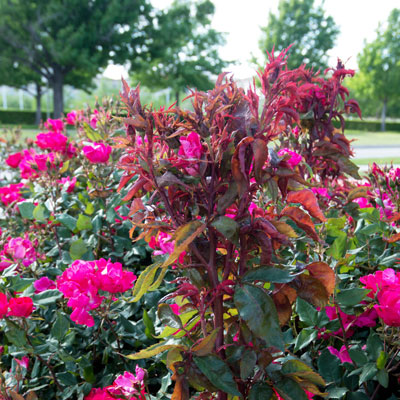Question of the Week: February 4, 2021
“When and how do I prune my rose bushes?”

The rule of thumb is that bush roses are pruned by 50 percent, and that that pruning needs to be done in late January or the first 10 days of February. That time is running out, and the farther south you are in Texas, the earlier you’ll want to prune. Roses seem to be eternal optimists: they bud out and start growing after just a few days of warmth and sunshine.
And there’s a second important part of your pruning technique. Each time you cut a stem to reduce the plant’s height by half, that cut should be made just above a bud that faces out from the center of the plant. That bud becomes the one that grows actively, and that encourages the plant to develop a more spreading, open habit. That gives a better overall floral display, but it also allows better air movement through the plant, thereby lessening black spot and powdery mildew development.
Bypass shears give cleaner, less damaging cuts than anvil-type. Use lopping shears when pruning large canes. All cuts should be made at a 45-degree angle, and serious rosarians seal the cut ends with Elmer’s white glue. Personally, I’m not quite that serious about it, and my roses have always done well anyway.
These guidelines apply to all types of bush roses with the exception of old-fashioned types that only bloom in the spring. There aren’t a lot of those out there, but they are handled more like spring-flowering shrubs (azaleas, forsythia, bridal wreath, etc.), in that they’re reshaped immediately after they finish blooming.
Pruning climbing roses
Old-fashioned climbers only bloomed in the spring (on stalks produced the prior year), so you pruned them immediately after the blooms had finished. Newer climbers are ever-blooming, so you can do modest reshaping now and all along during the season.
If your climbers are growing on a trellis or fence, the most obvious pruning will be to remove any branches that are starting to grow out from their supports. You want to train them in two dimensions – flat against their supports. Subsequent pruning through the growing season will be done with that same goal in mind. It’s better to do a little pruning all along rather than one massive job annually.
The rotten luck of rose rosette virus…

Finally, if you live in DFW you may have noted the dearth of beautiful rose plantings in recent years. That’s due to a rose-specific virus called rose rosette. Rosette is not a new disease. It’s actually been around for decades. But it really flared up in DFW rose plantings ten years ago, and it hasn’t let go.
The plants’ growth is distorted, clubby, often bright crimson and loaded with thorns. Flowers fail to open properly, and the plants go downhill rather quickly.
You can’t prune it out, and there is no spray to control either the virus or the microscopic wind-borne mite that carries it through neighborhoods. Pathologists tell us to remove infected plants, roots and all, immediately, put them in black plastic trash bags and send them to the landfill. All varieties seem to be susceptible.
There is a huge amount of research underway to determine workarounds for rose rosette virus. Keep reading online and I’ll do the same. Hopefully before long solutions will be found, but as we’ve all discovered in the past year of the pandemic, viruses are exceptionally tricky. That’s even true with roses.
